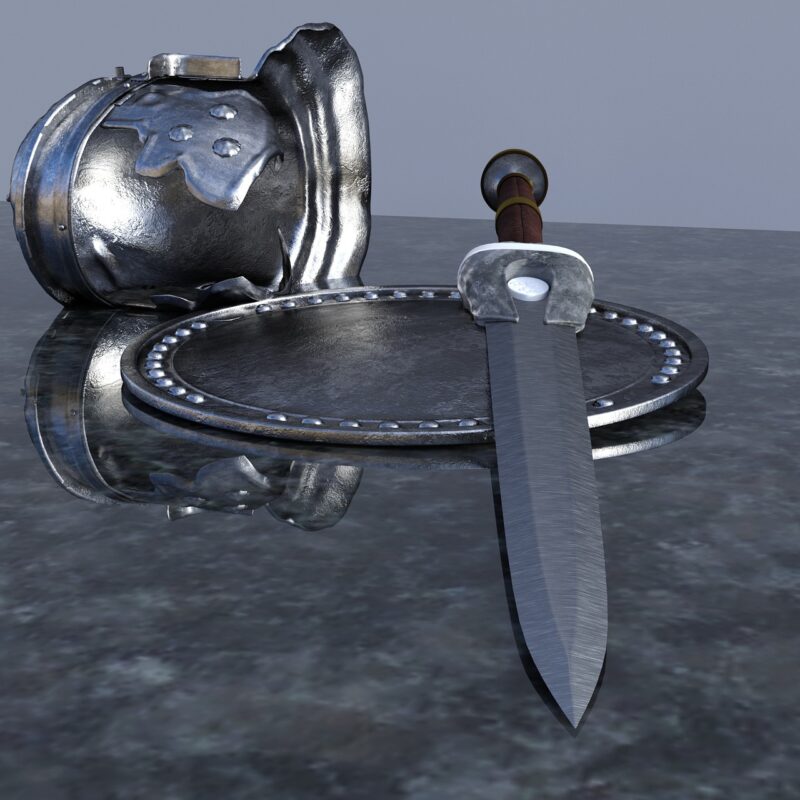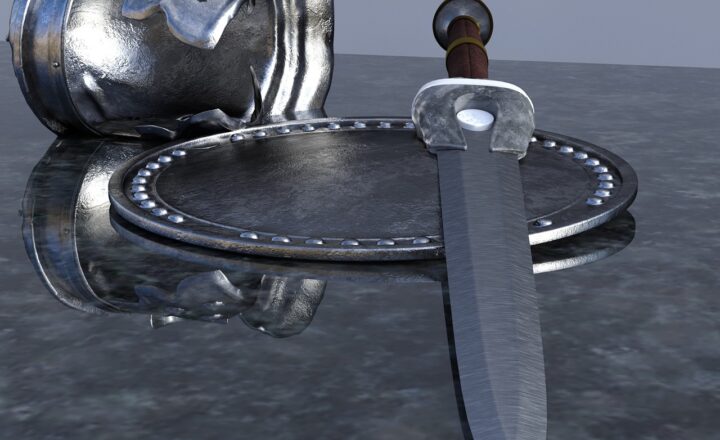From Swords to Drones: The Evolution of Weapons Throughout History
November 17, 2024

The history of weapons is a fascinating chronicle of humankind’s ingenuity, resilience, and the often harsh realities of survival. Over thousands of years, weapons have evolved from rudimentary tools for hunting and conflict to sophisticated machines capable of causing destruction on a global scale. In this article, we will explore the key milestones in the evolution of weapons, from ancient swords to modern drones, while analyzing the impact these changes have had on warfare, society, and our world.
1. The Dawn of Weaponry: Primitive Tools and Swords
Humans have always needed tools to defend themselves and secure food, leading to the creation of primitive weapons. Early weapons were typically made from stone, bone, and wood. As human societies grew, so did their weaponry.
– **Stone Age Weapons**: The earliest weapons were simple spears and hand axes, used for hunting and defense. These tools marked the beginning of a human’s reliance on crafted tools for survival.
– **The Development of the Sword**: As civilizations advanced, the sword emerged as the ultimate melee weapon. The Bronze Age marked a significant shift, as swords began to be forged from metals, greatly enhancing their effectiveness. The sword became not only a tool of war but also a symbol of power and status in societies.
The sword’s design evolved over centuries, with various forms emerging, including the Roman gladius and the European longsword. The versatility and effectiveness of swords had a profound influence on combat and military tactics.
2. The Rise of Firearms: Gunpowder and the Changing Face of Warfare
The invention of gunpowder in the 9th century represented a monumental turning point in the history of weaponry. Firearms began to replace traditional melee weapons on battlefields around the world.
– **Early Firearms**: The first firearms were relatively ineffective and cumbersome, such as the hand cannon, but they marked the transition from melee to ranged combat.
– **The Musket Era**: By the 16th century, the musket became the primary infantry weapon. Its ease of use and ability to inflict significant damage changed military formations and strategies, leading to the establishment of organized armies and the decline of feudal systems.
– **Cannons and Artillery**: Firearms also led to the development of cannons, which became essential during sieges and naval warfare. The effectiveness of cannons reshaped the design and construction of fortifications, leading to new defensive strategies.
The rise of firearms drastically changed the landscape of warfare, making battles often more lethal and increasing the scale of conflicts.
3. The Industrial Revolution: Mechanization and Modern Warfare
The Industrial Revolution in the 18th and 19th centuries brought unprecedented advancements in weapon technology. Mass production enabled armies to equip larger forces with more sophisticated weaponry.
– **Rifled Barrels**: The introduction of rifled barrels provided greater accuracy and range to firearms, leading to more effective long-range engagements. The minié ball made rifled muskets deadly, drastically changing tactics on the battlefield.
– **Machine Guns and Artillery**: The late 19th century saw the advent of machine guns, capable of firing hundreds of rounds per minute. This development made traditional infantry tactics obsolete, leading to the trench warfare seen in World War I.
– **Weaponry of World War II**: The second global conflict saw the deployment of tanks, aircraft, and advanced artillery. Weapons such as the atomic bomb symbolized the extreme potential for destruction and changed the nature of warfare forever.
Each of these developments not only changed the way wars were fought but also impacted civilian life, as governments accrued more power over industry and society.
4. The Cold War Era: Technological Arms Race
The Cold War initiated a fierce arms race between superpowers, characterized by the development of both conventional and nuclear weapons.
– **Nuclear Weapons**: The introduction of nuclear arms represented a dramatic shift in military strategy. The sheer power of these weapons led to the doctrine of Mutually Assured Destruction (MAD), fundamentally affecting international relations and military planning.
– **Conventional Weaponry**: Advancements also occurred in conventional weaponry, with the development of guided missiles, tanks, and advanced fighter jets. The focus on precision and technology over sheer numbers marked a significant departure from past conflicts.
– **Covert Operations and Asymmetrical Warfare**: The era also saw an increase in covert and asymmetrical warfare through the use of intelligence, propaganda, and guerrilla tactics.
The technologies and strategies born of the Cold War continue to influence modern combat and international relations today.
5. The Age of Drones and Cyber Warfare
In recent years, the evolution of weapons has emphasized the integration of technology with warfare, leading to a new paradigm: drones and cyber warfare.
– **Unmanned Aerial Vehicles (UAVs)**: Drones represent one of the most significant advances in modern military technology. They allow for remote reconnaissance and precision strikes without risking human lives. The use of drones in combat zones has raised ethical questions and concerns over the future of warfare.
– **Cyber Warfare**: Another component of contemporary warfare is cyber warfare, where nations utilize digital tools to disrupt or damage each other’s infrastructure. This shift highlights a new dimension of conflict, where information and digital capability take on a central role in national security.
As technology continues to evolve at an astonishing pace, we must consider the implications of such advancements on humanity, ethics, and the future of war.
Conclusion
The journey from swords to drones encapsulates humanity’s quest for advancement, efficiency, and control over the battlefield. Each era in weapon development reflects changes in society, technology, and the dynamics of conflict.
As we stand on the cusp of further technological advancements, it is crucial to navigate the challenges and responsibilities that come with these innovations. The evolution of weapons not only shapes military capabilities but also raises profound questions about the nature of power, ethics, and the future of warfare itself. In understanding this evolution, we gain insight into the past and a roadmap for the future of weapons in our world.








